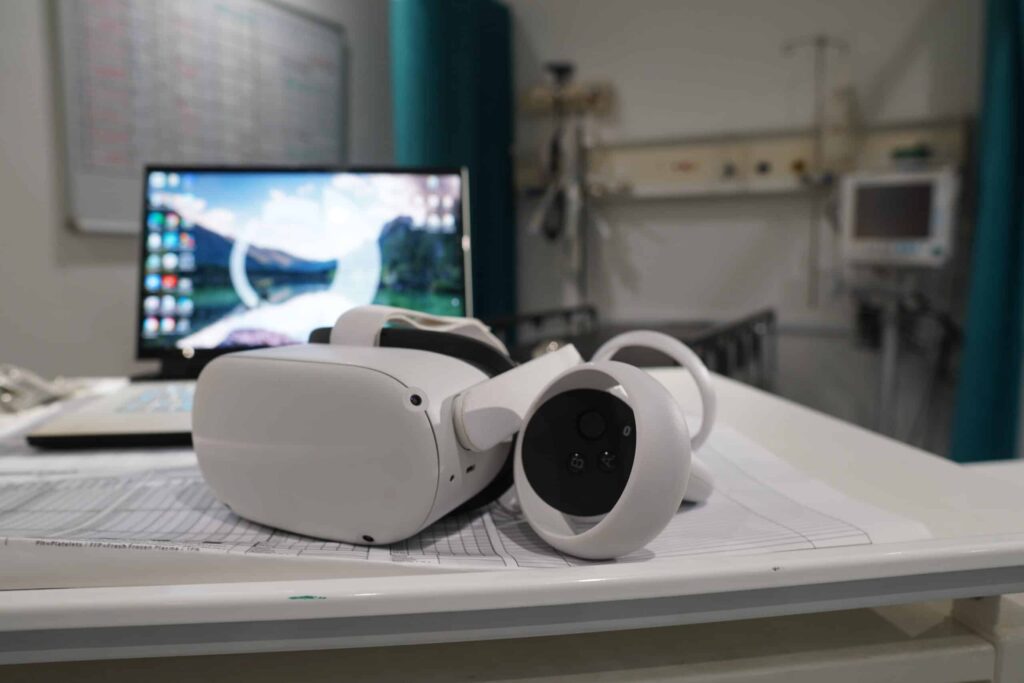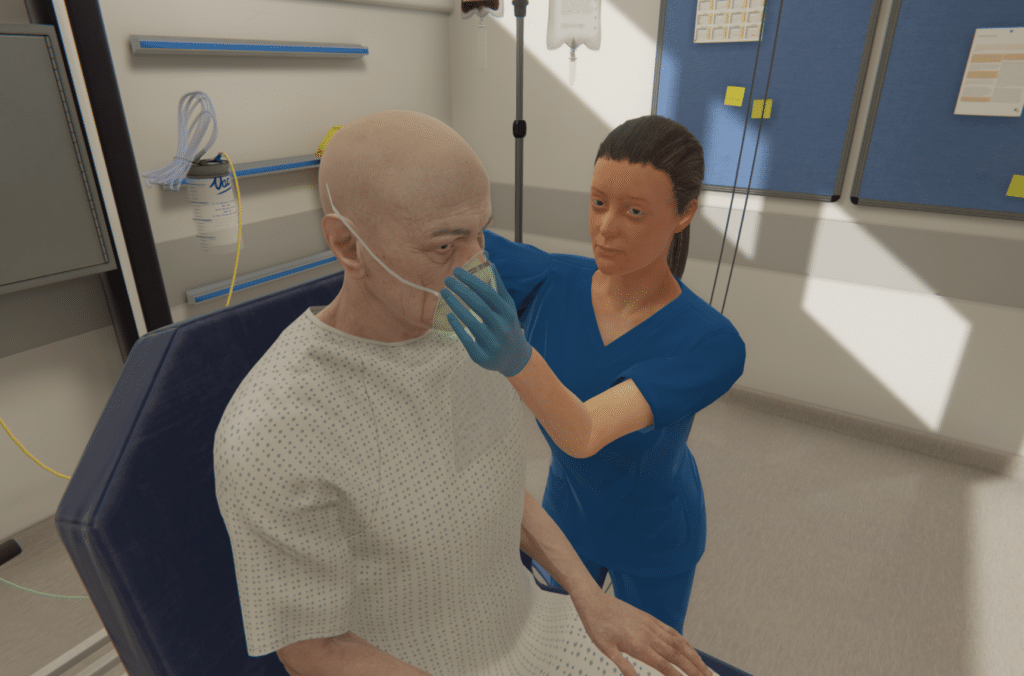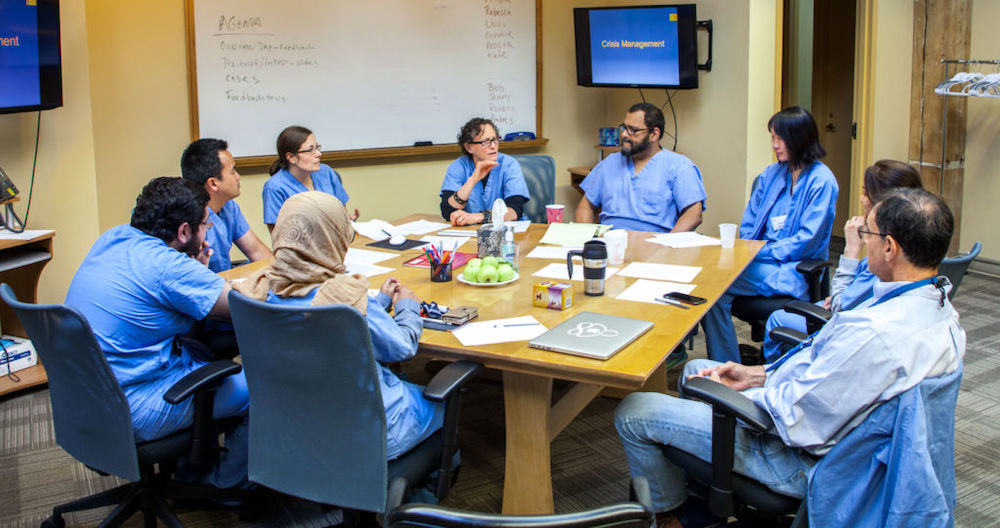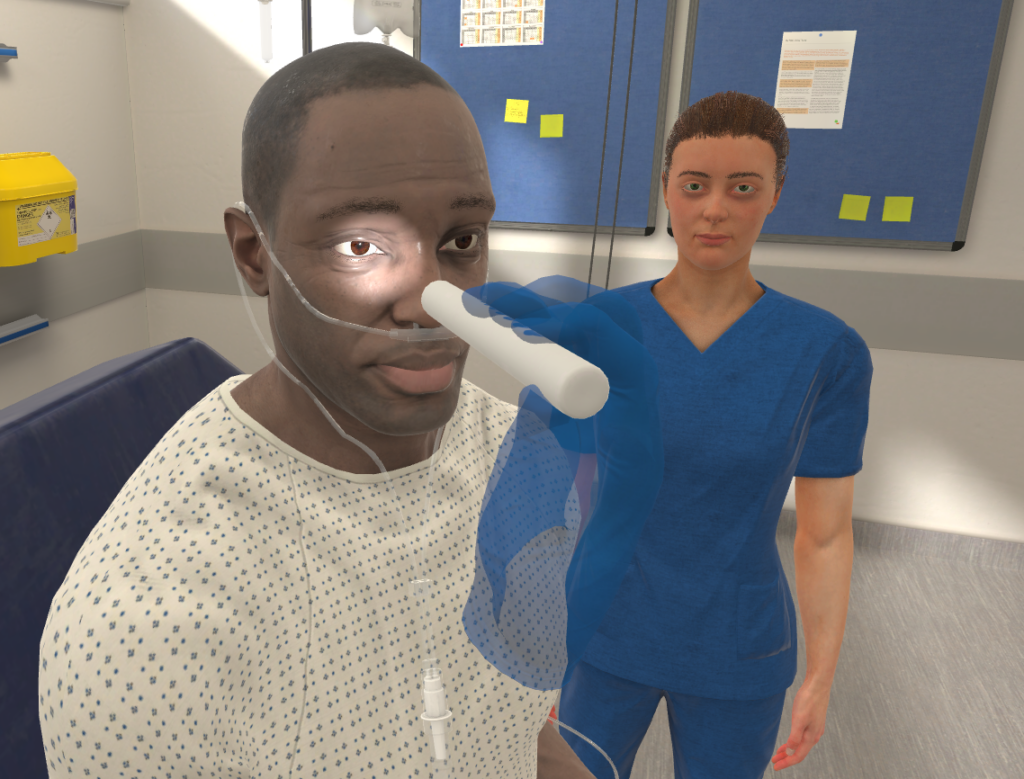New Brunswick, Canada is a large yet rural province. Finding ways to support the healthcare needs of rural communities is a key challenge for the faculty in the nursing program at the University of New Brunswick (UNB), who have successfully incorporated virtual reality within the Learn Where You Live (LWYL) Program.
The Learn Where You Live Program
The LWYL program introduced its first cohort of practical nursing to Bachelor of Nursing (BN) Students at UNB in Fall 2023. This program remotely supports practical nurses who are looking to continue their professional development and become Registered Nurses in the province.
This novel approach to remote education provides an alternative pathway for practical nurses to continue development in the nursing profession while supporting a local, rural community’s healthcare needs.
As a part of their pathway, learners in the program complete six asynchronous online courses before joining Years 3 and 4 of the BN program, virtually.
Learners in the LWYL program complete their coursework within their communities, receiving theoretical learning through alternative methods (e.g., online learning) and completing practical experiences via local partnerships in their respective communities.
This is in an effort to create more robust healthcare support for rural communities, which means seeking alternative yet effective ways to deliver learning to students – including simulation.

Using VR in the LWYL program
The Faculty of Nursing (FON) and the University’s Spatial Computing Education, Training & Research Laboratory (SPECTRAL) formed a VR implementation team and together have developed a robust VR program for these students. The core team includes Renée Gordon, Dr. Don Leidl, Ollando Brown, and Jeff Mundee.
In the LWYL program, VR simulations have been incorporated into every course, whether theoretical or clinical, and serve different purposes for different courses.
For example, within a nursing theories course, which teaches about common nursing theories and notable theorists, students can find it difficult to relate these abstract concepts to their own practice.
The creative faculty teaching this course are using OMS to have students apply nursing theory to a simulation. Students then debrief and reflect on how they were able to apply theory to practice, what it meant for the simulated patient, and how it influenced steps learners’ took throughout the simulation.
As one of the key takeaways from their implementation of VR into their LWYL program, faculty have noted the crucial component of orientation to support this process.
Orientation to VR
When LWYL students join Year 3 of the BN program, they complete a full day in-person orientation. This provides students with an opportunity to meet one another and mingle, and serves as a touchpoint for faculty to give some much-needed information before learners set off into their online term.
As part of their orientation day, learners get acquainted with virtual reality, the technology they’ll be using to conduct simulations as they continue in the program. According to Renée, the VR implementation team has learned that “time in headsets equates to success”, and orientation to the technology is imperative for both faculty and students. Students begin immersing themselves in VR with an application for meditation or painting – even a video game!
Per the VR implementation team, this opens students’ eyes to the capabilities of VR and reframes students’ understanding of the technology. Orientation also includes expectation-setting for why VR is being used and the benefit of this modality for learning.
Finally, learners go through a structured walkthrough of OMS and the process being used including pre-brief and debrief of an OMS scenario. Following this orientation, students receive a VR headset, which they take home with them and use throughout the remainder of their time in the LWYL program.

Learner experiences and outcomes
As Renée Gordon puts it, faculty at UNB want learners to be fully engaged in simulated experiences by “doing actions and seeing the outcomes of those actions in real-time”, and see immersive VR simulations as a teaching modality being “critical to building clinical judgment”.
While learners had different perceptions of VR coming into the program, overall, the student experience has been positive. Particularly, the orientation day, prebrief, and the need to debrief the technology as part of the synchronous facilitated debrief process were key points that the VR implementation team noted were important in helping optimize the learning experience.
An interesting finding in the research this team is doing as part of this project was around the use of VR in the self-identification of knowledge gaps. As the students in the LWYL program are all practical nurses, OMS scenarios and facilitated debriefing helped learners connect their strengths and identify knowledge gaps they have as BN students relating to the role.
Renée Gordon notes that this may be due, in part, to the unique quality of VR, where “every learner has a different experience”. She contrasted that with manikin or group-based simulation, where learners are all together, experiencing the same case at the same time. In VR, “every student gets to have that first-person user experience” which is “something you cannot do in in-person simulation – it’s too resource intensive.”
This creates a “rich opportunity” for learners to be the decision-makers, seeing outcomes of actions unfold in real-time, and receiving “immediate, targeted feedback to what they did and how they can improve.” That aspect, alongside the repeatability of OMS to immediately put feedback into practice, “is a phenomenal opportunity for learning.”

Faculty engagement
With such success using OMS in the LWYL program during its first year, VR was introduced to all faculty in the FON at UNB during this year’s scheduled curriculum development days, which had a focus on simulation.
Day one began with didactic discussion on simulation best practices. Building on day one, day two took the theoretical to the practical, running faculty through a screen-based, in-person, and VR simulation as participants.
For the VR simulation, Renée and her colleagues conducted a prebrief and orientation session to familiarize faculty with the technology and learning objectives. Faculty then participated in a facilitated debrief session just as they would in the LWYL program, modeling the best way to use VR – from start to finish.
By the end of day two, all 40 faculty members in attendance had participated in a VR simulation. During day three, there was plenty of excitement from faculty, many of whom admitted they previously had been apprehensive or disinterested in the use of VR. Renée noted, some even shared they ‘had no idea it was going to be that amazing’.
At this point, faculty participated in curriculum building, identifying and mapping what learning outcomes might be best supported by simulation, including VR.
At the end of the three days, faculty in the session reported that they found VR to be very engaging, and are excited to incorporate VR into their teaching.
What the future holds
Currently, the FON at UNB are looking at ways to incorporate VR across their programming, to support both remote and in-person learners.
Renée and her colleagues continue to conduct and analyze research from their first cohort, as they prepare for the second cohort to start this fall. They’re particularly excited about incorporating the use of OMS Create, which allows faculty to adjust existing scenarios to meet the Canadian context, such as changing labs or other values to match Canadian metrics.
As Renée Gordon notes, “OMS Create is an important tool which we are thrilled about.”
The faculty at UNB have found great success in their first cohort of learners using virtual reality, and the team at UNB looks forward to scaling their use of VR and enhancing student learning.
